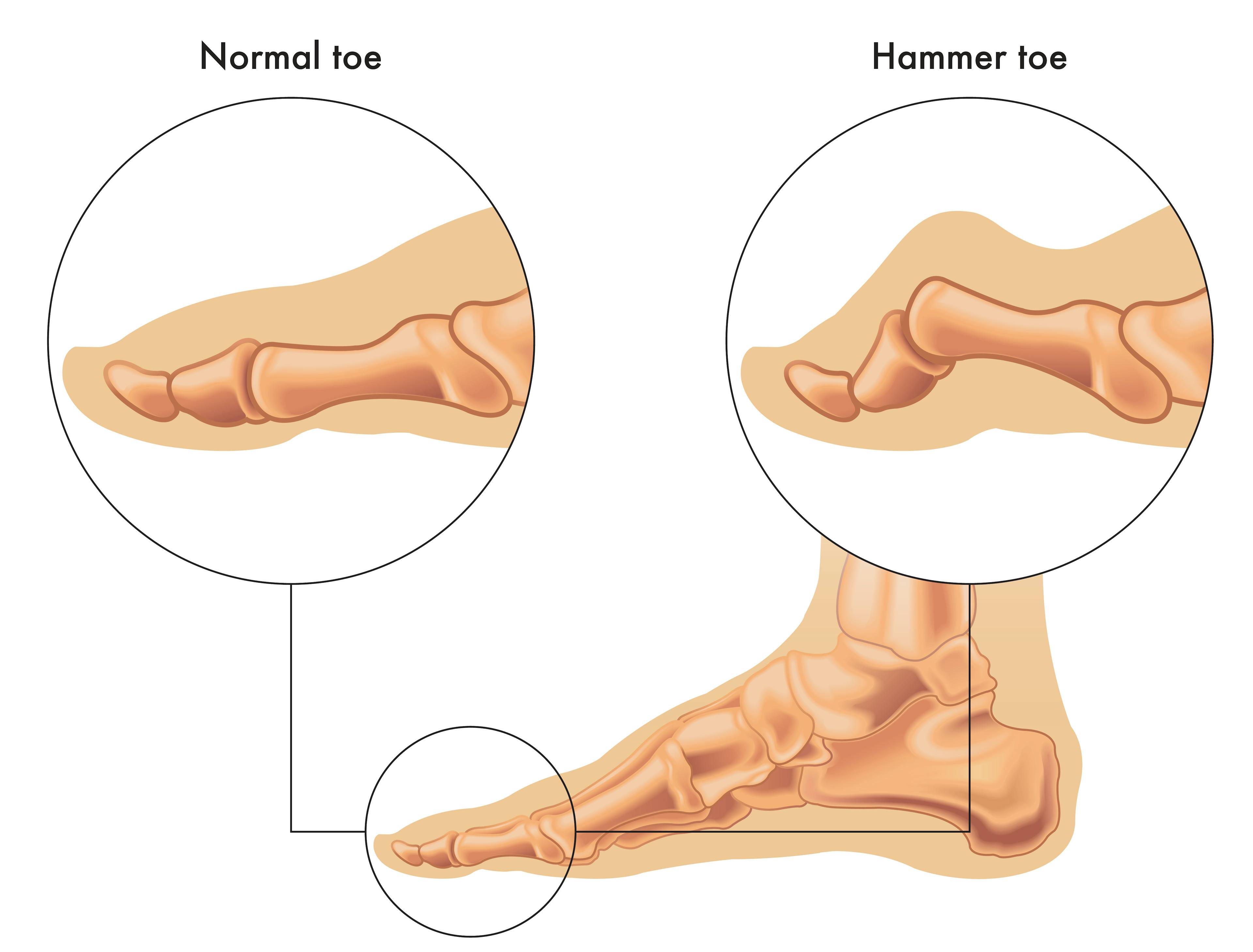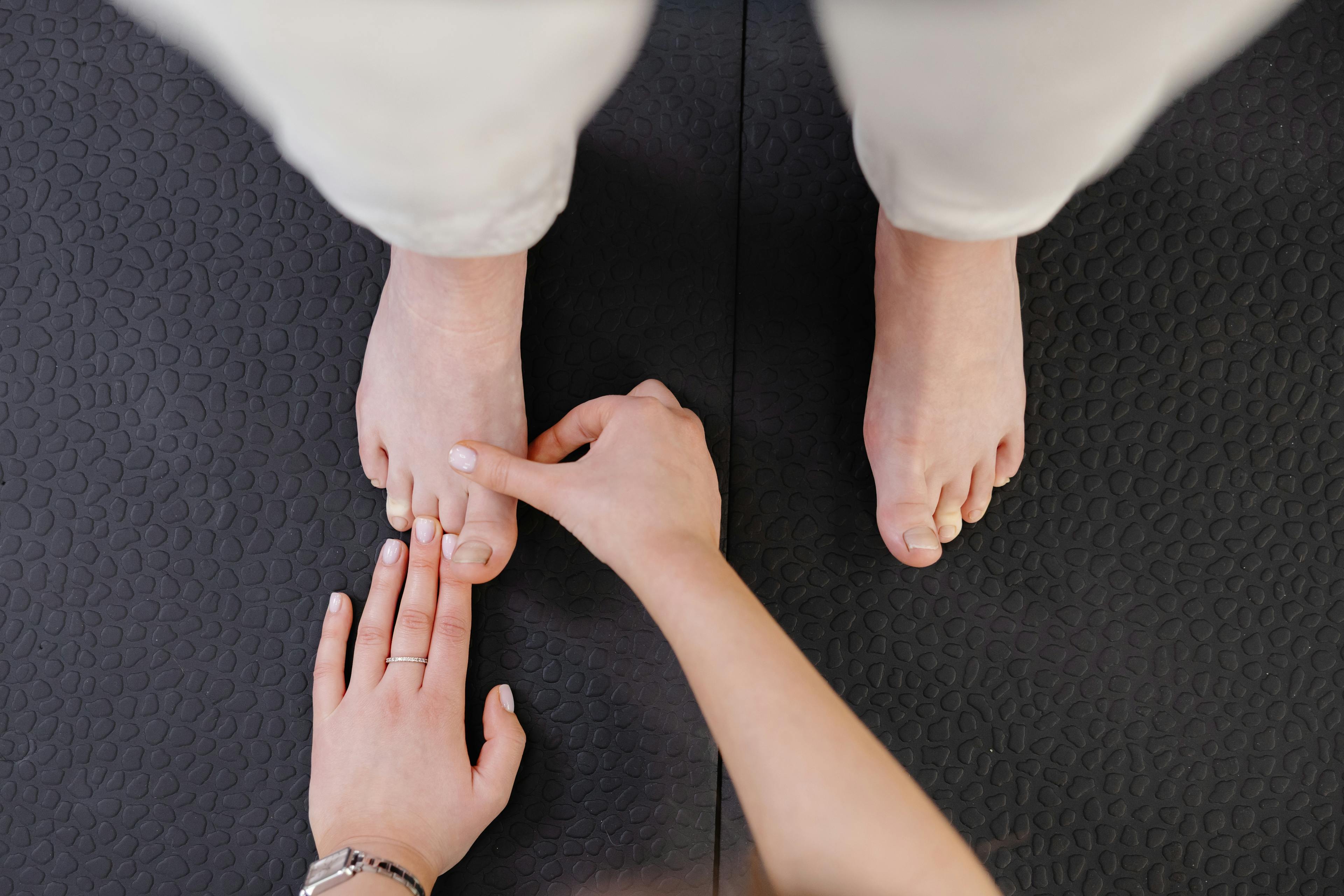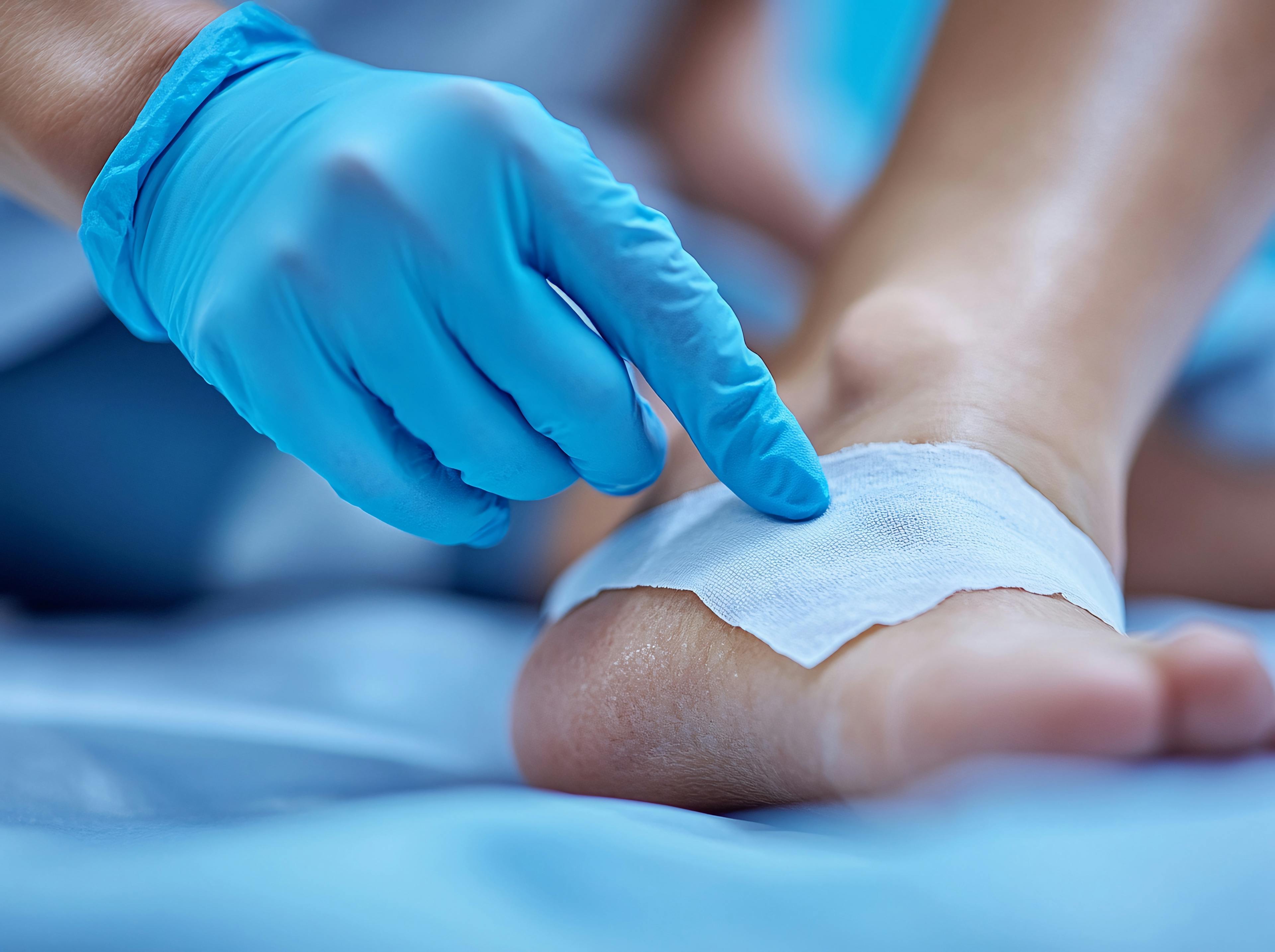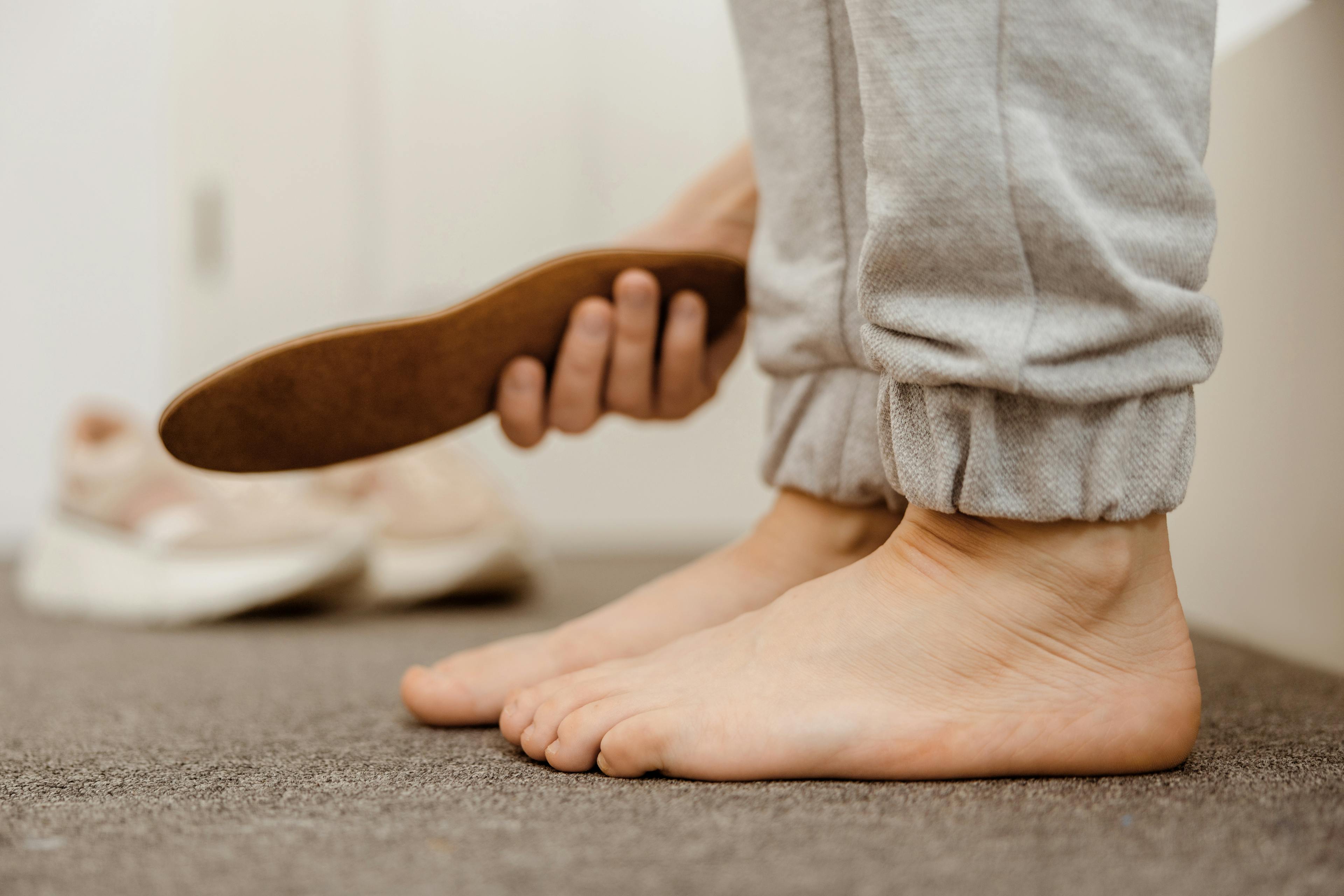Hammertoe is a common foot problem that can make walking and wearing shoes painful. This article covers the causes, symptoms, and treatment options to help you understand and manage the condition.
What is Hammertoe?
Hammertoe affects muscles and ligaments in toes, causing them to bend or curl. This deformation gives them the shape of a hammer. Hammertoe most often occurs in the second, third, or fourth toe. Some people are born with this condition, while others may develop it later in life.

There are two types of hammertoe:
- Flexible hammertoe: You can still straighten out the affected toe. Flexible hammertoes are less serious because they can be diagnosed and treated while still in the developmental stage.
- Rigid hammertoe: The toe becomes fixed in a bent position and cannot be straightened.
What Causes Hammertoe?
Several factors can contribute to the development of hammertoes, including:
- Wearing ill-fitting shoes: Shoes that are too narrow or don’t provide enough arch support can force your toes into awkward positions. High heels and children wearing shoes they've outgrown can increase the risk of hammertoes.
- Foot shape: If you have high arches or flat feet, your foot’s natural shape may make you more prone to developing hammertoes.
- Long toes: If your toes are naturally longer, they may not have enough space in standard shoe sizes, which can put pressure on them and lead to hammertoes.
- Health conditions: Conditions like diabetes or rheumatoid arthritis can affect the feet and toes, increasing the likelihood of hammertoes.
- Bunions: Bunions can push your toes out of alignment, adding pressure and contributing to the development of hammertoes.
Hammertoe Symptoms
The primary symptom of hammertoe is a toe that looks bent upward in the middle. This can cause foot problems such as:
- Pain or discomfort when walking or wearing shoes
- Corns or calluses on the top of the middle joint or tip of the toe
- Difficulty moving the affected toe
- Redness or swelling in the affected area
- Open sores in severe cases
If left untreated, hammertoes can lead to long-lasting pain, difficulty walking, and a higher chance of falling.
Hammertoe Treatment
Treatment for hammertoe varies based on type and severity. Your podiatrist will thoroughly examine and x-ray your foot to determine the most suitable treatment.
Conservative Treatments for Hammertoe
For mild to moderate cases, a foot specialist will often start with non-invasive hammertoe treatment options such as:
- Orthotic devices: Custom-made inserts can help redistribute pressure and alleviate pain.
- Padding and taping: These techniques can reposition the toe and reduce pressure on the affected area.
- Medication: Anti-inflammatory drugs and cortisone injections may be prescribed to alleviate acute pain and inflammation in the affected area.
Types of Hammertoe Surgery
Surgical intervention for a hammertoe may be necessary when conservative measures aren't effective, Hammertoe surgeries are usually outpatient procedures, which means you can go home the same day.
Surgical options include:
- Fusion: The most common surgical procedure for correcting hammertoes involves removing part of the bone at the affected joint. To keep the toe straight while it heals, a temporary pin (called a K-wire) is inserted and removed once the bone ends fuse together. A more modern approach uses a rod or screw that is permanently implanted to hold the toe in place.
- Tendon transfer (tendon lengthening): This procedure involves rerouting the tendons from the bottom to the top of the toe to help it straighten.
- Joint resection: The end of the bone at the fixed joint is removed and pins are placed temporarily to keep the toe straight.
Recovery After Hammertoe Surgery
After surgery, it’s common to have some stiffness, swelling, and redness in your toe for 4 to 6 weeks.
You’ll be able to put weight on your foot right after the procedure, but it’s important to limit your activity while your toe heals. Keeping your foot elevated as much as possible will help reduce pain and speed up recovery.
Once your toe has healed, it may be slightly longer or shorter than before, and you won’t be able to bend it at the fused joint.
Hammertoe Treatment at Home
If you're dealing with hammertoe discomfort, here are some steps you can take at home to feel more comfortable:
- Use a non-medicated hammertoe pad: Placing a commercial, non-medicated pad around the affected toe can help reduce pressure and ease discomfort.
- Choose shoes with a roomy toe box: Opt for footwear that gives your toes extra space to prevent further irritation.
- Apply ice to reduce swelling: If the area becomes painful or swollen, apply an ice pack several times a day.
- Wear loose-fitting shoes: A pair of looser shoes can help reduce pressure on your toe, making walking a little easier until you're able to see your podiatrist.
When to See a Doctor for Hammertoes
Hammertoe is a progressive condition, which means it gradually worsens over time if left untreated. Getting treatment early can help prevent the need for more invasive procedures later on. You should consider seeing a foot doctor if you experience:
- Persistent pain in your toes or feet
- Difficulty finding comfortable shoes due to the condition
- Decreased flexibility in your toes
- Corns or calluses that don't respond to at-home care
Need Treatment for Hammertoe in Houston?
If you think you have a hammertoe and need immediate care, or want to have your feet examined, our podiatrists are here to help.







